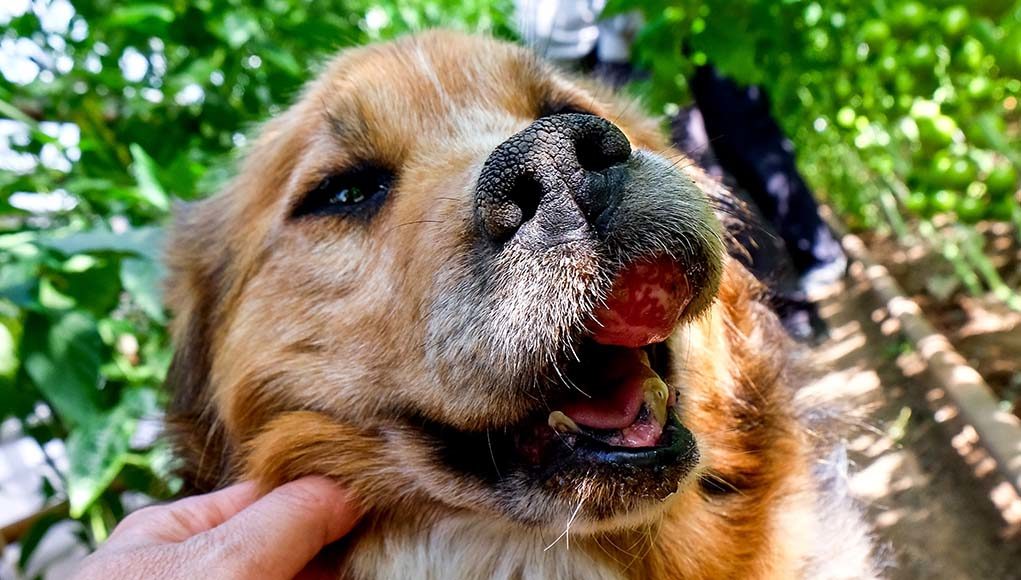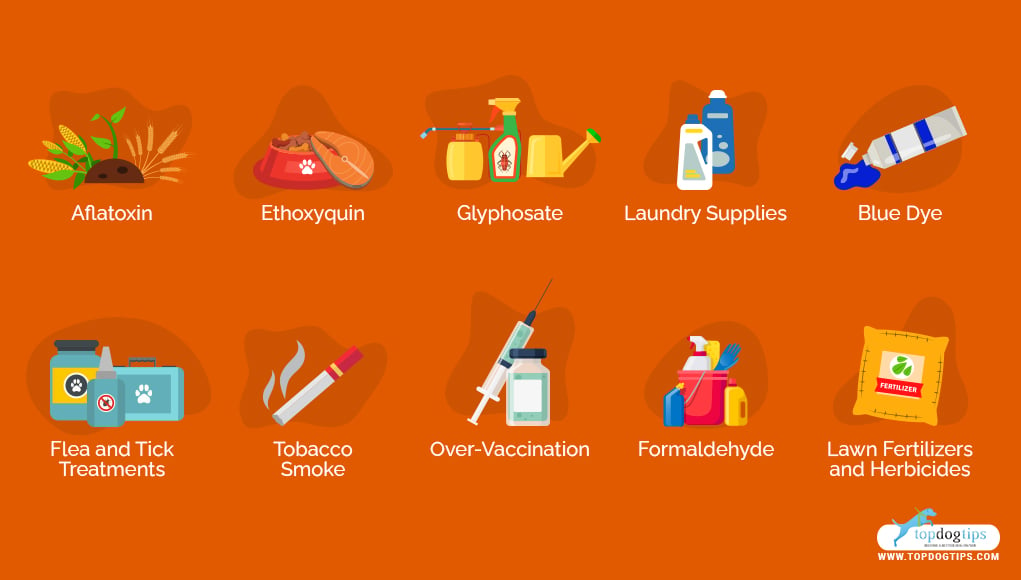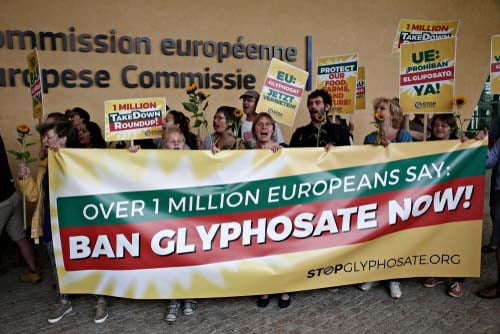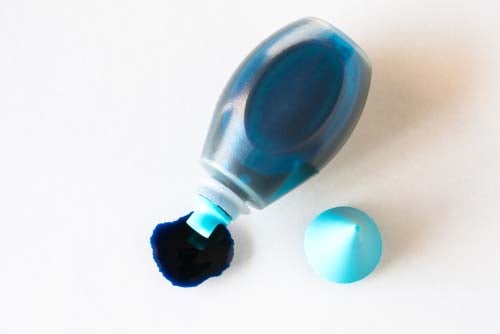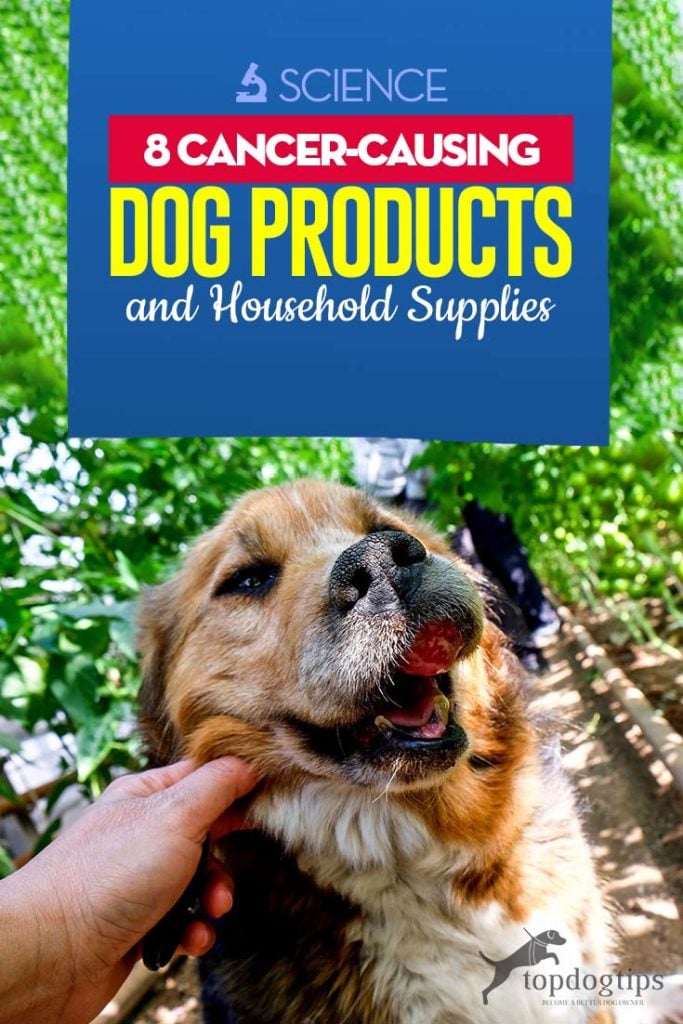Cancer in dogs may be due to nature and nurture.
But even if your pet dog's breed is already at an increased risk of cancer, paying attention and removing certain products from their life can significantly decrease that danger.
Studies show that while some breeds are genetically predisposed to cancer (1, 2), different cancers in dogs are often a result of external factors and cancer-causing dog products (3, 4, 5, 6, 7).
So whether it's food ingredients or household supplies, pet owners are strongly advised to avoid some items.
Generally, cancer is a disease of senior dogs (8).
A dog's skin and soft tissues are the most common places for cancer to show up in dogs, with Canine Cutaneous Histiocytoma, a type of skin tumor from Langerhan cells, being the most common in dogs all across the world, and caused by products or environmental contamination (9, 10, 11, 12).

There are a massive number of different cancers that external factors can cause. As an example, let's take a look at a mammary tumor in dogs.
While hormones may cause it, studies have detected contaminants in the most aggressive tumors (13).
In one of the many cases, pyrethroids were a very common household insecticide. As a result, doctors detected 33.3% of canine tumors, which triggered dogs' proliferation of cancer cells (14).
That is to say, even with breeds predisposed to cancer, they will not necessarily develop it unless exposed to some products that stimulate cancer cells (15).
The said detected contaminants are just one of the multiple offending items often found in households with pets. Below are the rest of the cancer-causing dog products that dogs must avoid.
10 Cancer-Causing Dog Products and Household Supplies
1. Aflatoxin
Since the 2013 EU aflatoxin contamination, the said substance has been on World Health Organization‘s “to watch” list and banned in many places (16, 17).
Aflatoxins are well-known carcinogens poisonous to dogs and humans alike.
They grow from certain fungi, such as Aspergillus flavus or Aspergillus parasiticus, and the said carcinogen is present in several crops like corn, peanuts, and cottonseeds (18).
Several states in the U.S. banned it while some still allow its use. Unfortunately, you might not always be able to tell from the label if your dog's food contains it.
This toxin is more dangerous to pets than humans (19). The risk of liver damage and liver cancer in dogs increases by 30 times when exposed to aflatoxins (20, 21).
Before you purchase a particular brand of dog food or treats, check online to see if it contains this ingredient.
You can also call the pet food manufacturer and ask whether this ingredient is part of their formula.
2. Ethoxyquin
Commercial dog foods and treats stored on the shelf must always use some preservatives to keep them from spoiling and staying somewhat fresh.
This part is unavoidable unless you choose fresh dog food only.
However, while certain dog food preservatives may be natural and very effective and preserve foods, other types cause cancer. Ethoxyquin is one of them, commonly found in dog food with a fish meal (22).
People exposed to high levels of ethoxyquin have experienced blindness, infertility, and cancers such as leukemia.
In dogs, ethoxyquin can cause immune deficiency, kidney and liver damage, and cancers of the dog's spleen, liver, skin, and stomach (23, 24, 25).
Ethoxyquin is just one of the many preservatives that may be dangerous to dogs. There are others, including BHA and BHT, that can also be cancer-causing.
However, their levels are below what EPA considers “unsafe” (26), so they're still allowed to be in pet foods. It's up to the pet owner to be diligent if they wish to avoid them.
3. Glyphosate
Glyphosate is a commonly used herbicide found in commercial products as well as pesticides for home use.
These products are among the most offending cancer-causing dog products on this list, with enough scientific evidence proving their harm (27, 28).
Manufacturers originally developed this herbicide to replace an older version of pesticides, but studies from the last decade indicate its toxicity and dangers (29).
Glyphosate can cause DNA damage and mutations in dogs, leading to many different types of deadly canine cancers and other incurable diseases (30, 31).
4. Laundry Supplies
You may not think of laundry supplies as cancer-causing dog products, but some of them will be.
Certain laundry products, such as detergent, fabric softener, bleach, and dryer sheets, can be hazardous for dogs (32, 33). Some items may include formaldehyde which is a known carcinogen (34).
While most laundry supplies will not harm you or your pet in small doses, any cancerous cleaning supplies or different laundry products may have a harmful effect if a dog gets access and ingests them in a higher dosage or on more than one occasion.
Choose more organic cleaning products. Always keep laundry supplies out of your pet's reach. Carefully rinse your dog's supplies before giving them back.
You can also make more natural homemade cleaning supplies and even a homemade laundry detergent the DIY style, safe for dogs ingredients.
5. Blue Dye
Particular blue food coloring, specifically Blue 1 (Brilliant Blue FCF) and Blue 2 (indigotin), have been shown in studies to be cancerous to animals (35).
For example, both Blue 1 and Blue 2 food coloring research saw it directly linked to the cause of brain tumors in animals (36, 37).
Even though most dog foods aren't blue and use very little to no food coloring, these food dye ingredients are still in some dog foods or treats.
6. Flea and Tick Treatments
Tick and flea treatments are some of the most commonly purchased dog products. The good news is that many work very well and do the job.
The bad news is that we can also consider some flea and tick treatments among dangerous cancer-causing dog products.
Even though using dog flea and tick treatments occasionally is fine, many dog owners apply them year-round, “just to be safe.” Ironically, this could be worse for the dog.
Some pesticides found in flea/tick products, such as fipronil and permethrin, can lead to some health problems in dogs, albeit rarely.
The flea and tick solution ingredients cause thyroid and other cancers in dogs and cats, but rare (38).
Some can also cause bladder cancer in dogs (39). Moreover, pet owners should know that some flea/tick products increase the risk of brain cancer in kids (40).
7. Tobacco Smoke
Smoking and tobacco products can cause cancer in humans, having the same effect on animals (41). Smoking anywhere near your dog significantly increases lung cancer and oral cancer (42, 43, 44).
This risk can further increase if your pet ingests cigarette butts or ashes regularly. If you do smoke, minimize the chance and avoid smoking around your pet.
Learn more about how tobacco smoke affects pets and what you can do about it.
If you stick with smoking, it's recommended to do this outdoors in a well-ventilated area and properly dispose of ashes and butts far away from your dogs.
Wash your clothing regularly and keep it in a closed hamper away from pets as well.
8. Over-Vaccination
Vaccines are essential for your dog in many cases against many dangerous diseases. They are generally safe (45, 46), especially for puppies who need to receive vaccines at specific periods.
We don't recommend avoiding vaccinating your can, particularly when it comes to core vaccines. Even vaccines in development serve as anti-cancer in dogs, and they have been proven entirely safe (47, 48, 49).
However, over-vaccination can become a problem. It can lower the dog's immunity which is dangerous for breeds at higher risk of cancer since they will be less effective at fighting it (50, 51, 52).
9. Formaldehyde
Formaldehyde is a strong-smelling gas used for building materials, household cleaners, and wood and paper product coatings. This is also famous as an ingredient in embalming dead bodies.
Exposure to the gas may cause leukemia, lung cancer and affect other parts of the body in humans, negatively affecting canines the same way.
It is also considered an irritant even for canines and may trigger allergic reactions.
Even attempting to ingest it in minuscule amounts may damage their digestive tract without an antidote.
It is best to remove new furniture with a pungent stench of wood coatings or anything that smells highly toxic; they may have formaldehyde.
10. Lawn Fertilizers and Herbicides
Lawn Fertilizers partnered up with herbicides make up the compound term ‘weed-n-feed.'
The problem regarding these substances is that they're inorganic, and thus posing a potential risk to anyone who inhales it.
However, likely unknown to many, research shows that the herbicides may form malignant lymphoma in dogs and is said to be potentially harmful even if an application only takes annually.
Specifically, professional lawn products may increase the chance of lymphomas both in canines and humans alike.
Even if you don't use lawn products, your neighbors might and may still pose a threat to any dogs around.
If your canine cannot avoid this, there are safer options for lawn cleaning, such as corn gluten. They're natural and non-toxic alternatives to fertilizers and herbicides.
You should always be aware whenever your dogs go outside, especially during spring or fall because these are likely occasions that anyone will treat their lawns out.
Other Causes of Cancer
Noting that many synthetic products either benefit or harms your pet's health, your dog may avoid possible adverse effects only if you pay attention to them.
However, aside from the products mentioned above, other cancer-causing factors exist too.
Listed below are possible causes of cancer in canines that you should keep in mind if you may find something wrong with them.
Environmental Factors
Known carcinogens and chemicals that can affect our health can also be factors for your pet's health deterioration.
They may have a higher sensitivity and lower immunity to the factors that we contact, so they may contract them worse than we do and even cause chronic inflammation.
Known environmental carcinogens that they may contract include ultraviolet radiation from prolonged exposure to the sun, air pollution from urban areas, and other atmospheric pollutants such as smog.
Old-Age and Family Background
While we do not precisely know its origins, cancer is likely to form in older dogs with weaker immune systems.
Controlled cells within their bodies may divide incorrectly; thus, creating more issues related to the deficiency of their immunity.
Genetics may also be an issue in developing cancer, significantly if the affected came directly from someone with a weak immune system.
Generally, dog breeds such as Golden Retrievers, Boxers, Bernese Mountain Dogs, and Rottweilers are more likely to develop cancer than other breeds.
This suggests that a dog's family or genetic history can affect their health at more significant risks.
Viruses and Other Forms of Cancer
Viruses can cause cancer in our pets.
For example, oral papilloma is a type of cancer that develops from the papillomavirus. It forms benign warts in your dog's mouth, especially on their lips, gums, mouth, or their mucous membranes.
Furthermore, some of them may be sexually transmitted, known as the canine transmissible venereal tumor.
Final Thoughts for Cancer-Causing Dog Products
Cancer may be inevitable for some dogs genetically predisposed to this disease.
However, exposure to toxic chemicals and potentially free radicals can be a health hazard and may cause damage to their immune system, making them more vulnerable to fatal illnesses.
Furthermore, certain cancer-causing chemicals in dog products or household supplies will also increase cancer risk for any category of dogs.
Nonetheless, this condition doesn't limit to the products listed above. They can also be in certain artificial preservatives in pet food and dog treats.
Before you purchase items from the market, you'd like your dog's diet and nutrition or household items that you'll need to use around.
Check the food manufacturers and ingredient list for any specifics that you might find harmful for your pet to eat or exposure to that may significantly cost their life.


